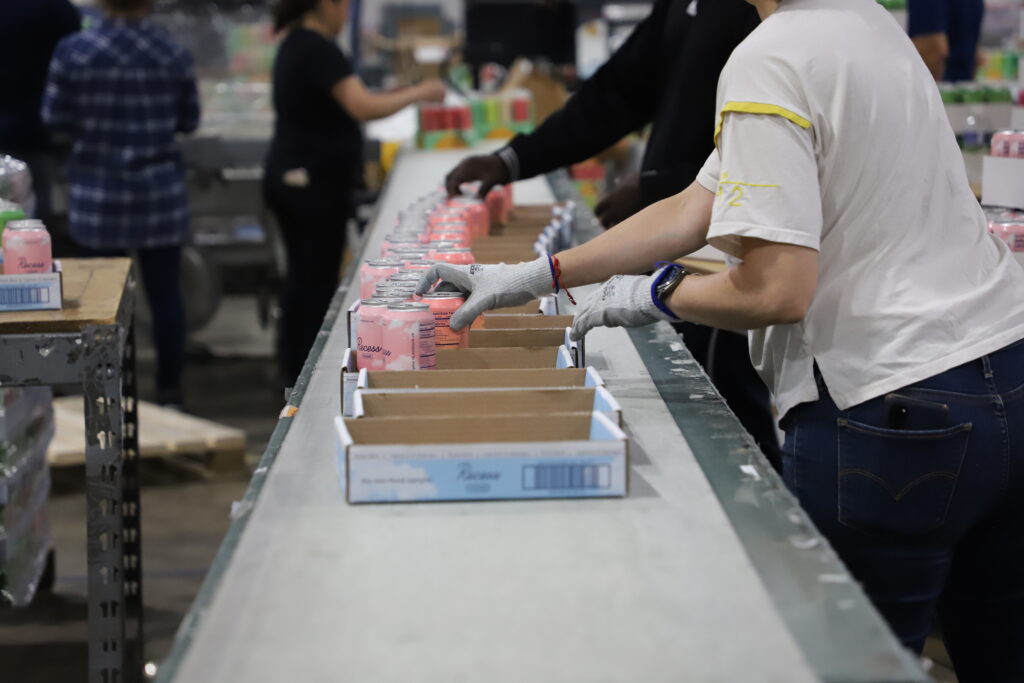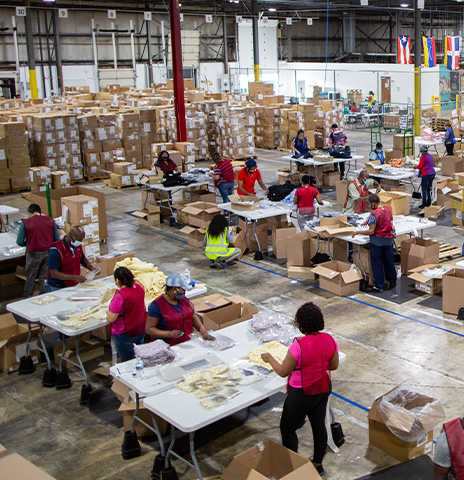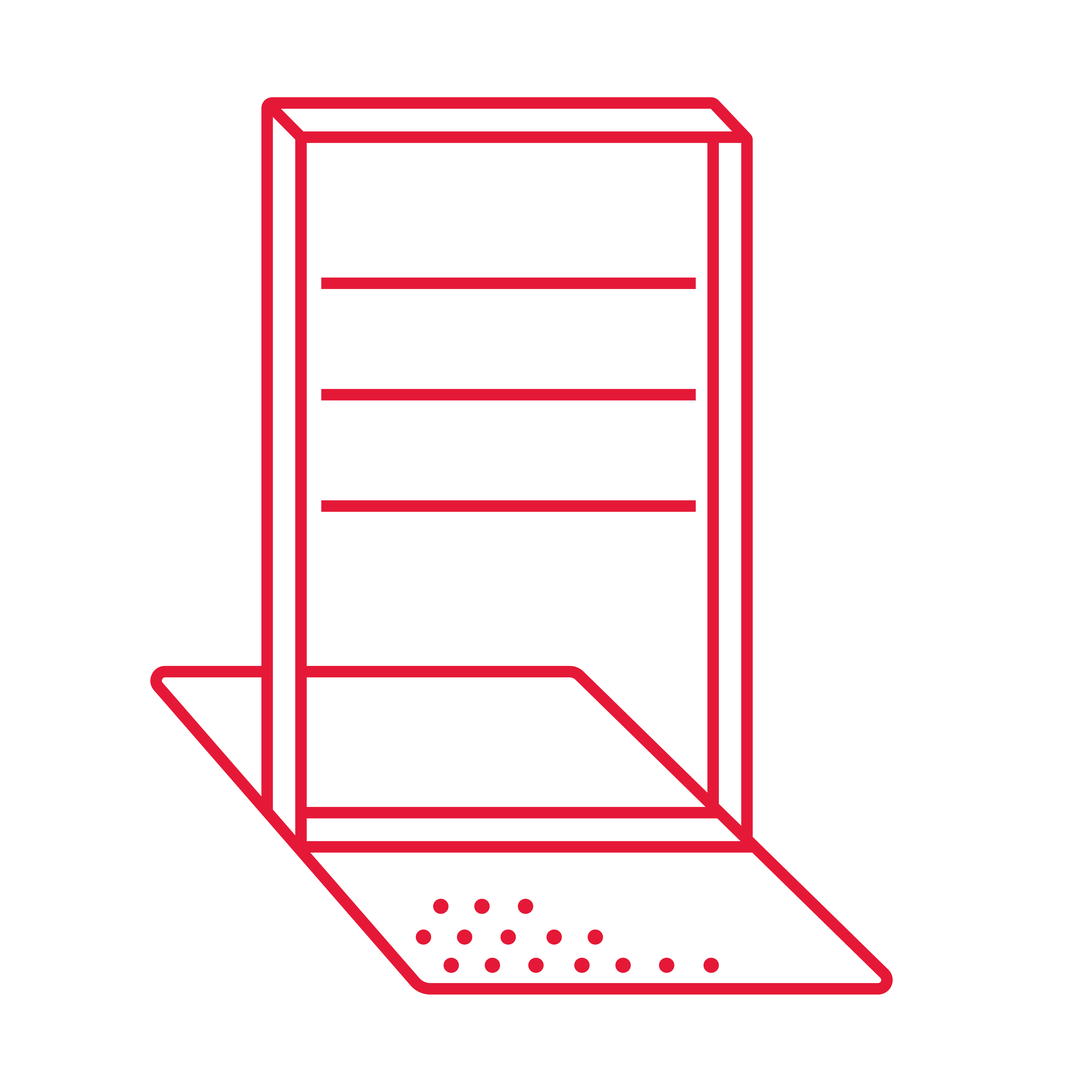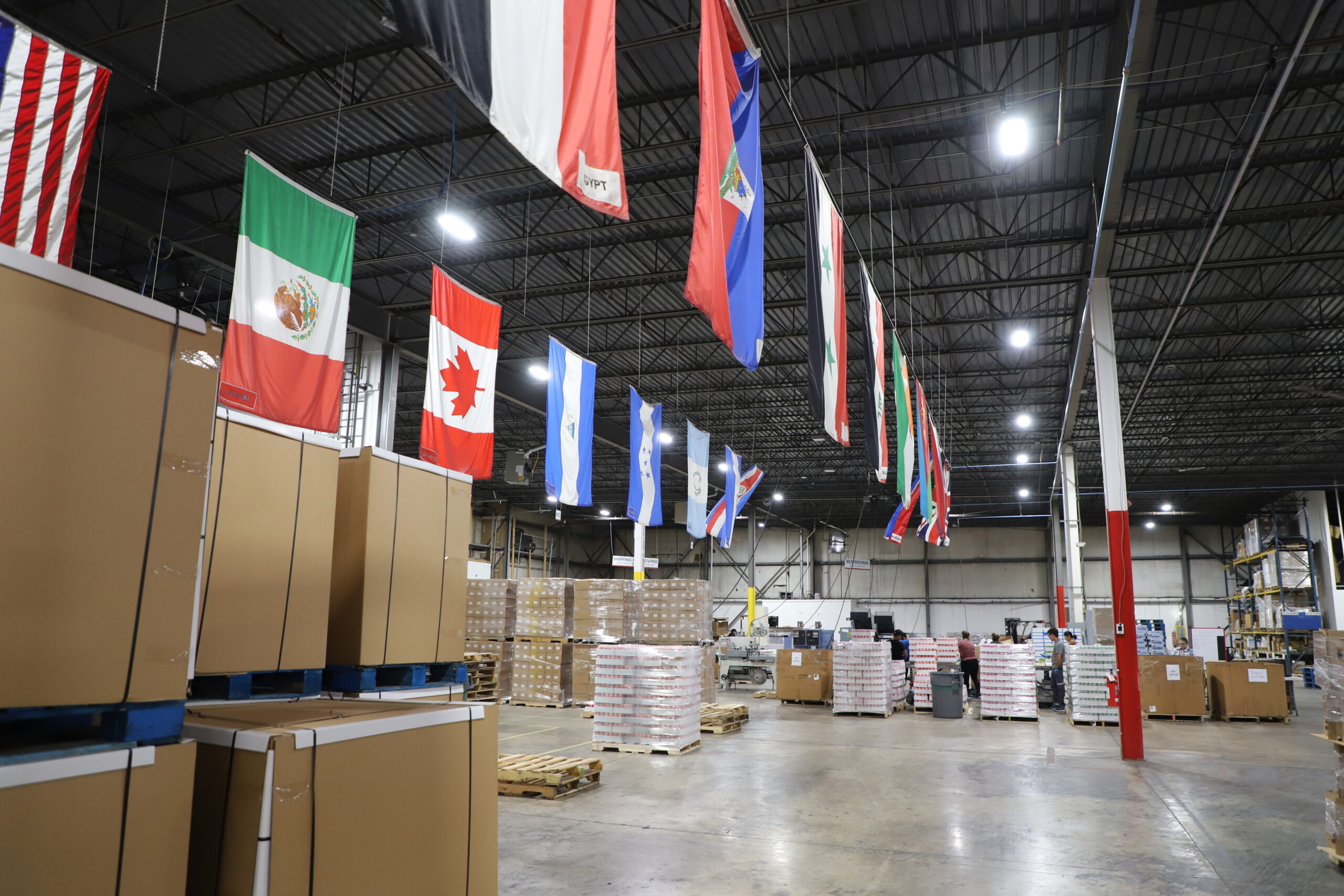Partnering with Acción Performance allows your business to remain agile as production needs shift. Our customized warehouse and distribution solutions eliminate wasted resources by optimizing performance as we seamlessly integrate into your logistics processes.
Our Warehouse and Distribution Solutions



Packaging Solutions
Stay on top of product alterations and capitalize on packaging as a marketing tool to your clients. Our team can focus on product appearance while ensuring safe and secure delivery to its destination.
OUR CAPABILITIES
- Kitting & Assembly
- Labeling & Stickering
- Quality Inspection
- Sortation
- Repack & Rework
- Display Builds
- Incentives & Loyalty Marketing
- Returns Refurbishing
- Shrink Wrap & Secondary Packaging
- Fulfillment By Amazon (FBA) Prep



Assembly & Co-Manufacturing Solutions
Reduce overhead costs and boost speed to market by shifting your assembly and co-manufacturing tasks to the Acción team. Our skilled team prioritizes quality and safety at every step.
OUR CAPABILITIES
- Kitting & Assembly
- Labeling & Stickering
- Quality Inspection
- Sortation
- Repack & Rework
- Display Builds
- Shrink Wrap & Secondary Packaging
- Incentives & Loyalty Marketing



Fulfillment & Logistics Support
Improve efficiency and maintain client satisfaction by outsourcing key fulfillment operations. Our team leads will manage processes from pick and pack all the way to returns.
OUR CAPABILITIES
- Kitting & Assembly
- Labeling & Stickering
- Quality Inspection
- Sortation
- Repack & Rework
- Display Builds
- Incentives & Loyalty Marketing
- Returns
- Shrink Wrap & Secondary Packaging
- Refurbishing



Fulfillment by Amazon (FBA) Prep
Ensure your products are properly packaged and sent on time for Fulfillment by Amazon. Acción Performance prepares your items to fit necessary requirements, saving your team extra time and valuable resources.
OUR CAPABILITIES
- Kitting & Assembly
- Labeling & Stickering
- Quality Inspection
- Sortation
- Repack & Rework
- Display Builds
- Incentives & Loyalty Marketing
- Returns
- Shrink Wrap & Secondary Packaging
- Refurbishing
- Packaging Solutions
-



Packaging Solutions
Stay on top of product alterations and capitalize on packaging as a marketing tool to your clients. Our team can focus on product appearance while ensuring safe and secure delivery to its destination.
OUR CAPABILITIES
- Kitting & Assembly
- Labeling & Stickering
- Quality Inspection
- Sortation
- Repack & Rework
- Display Builds
- Incentives & Loyalty Marketing
- Returns Refurbishing
- Shrink Wrap & Secondary Packaging
- Fulfillment By Amazon (FBA) Prep
- Assembly &Co-Manufacturing Solutions
-



Assembly & Co-Manufacturing Solutions
Reduce overhead costs and boost speed to market by shifting your assembly and co-manufacturing tasks to the Acción team. Our skilled team prioritizes quality and safety at every step.
OUR CAPABILITIES
- Kitting & Assembly
- Labeling & Stickering
- Quality Inspection
- Sortation
- Repack & Rework
- Display Builds
- Shrink Wrap & Secondary Packaging
- Incentives & Loyalty Marketing
- Fulfillment &Logistics Support
-



Fulfillment & Logistics Support
Improve efficiency and maintain client satisfaction by outsourcing key fulfillment operations. Our team leads will manage processes from pick and pack all the way to returns.
OUR CAPABILITIES
- Kitting & Assembly
- Labeling & Stickering
- Quality Inspection
- Sortation
- Repack & Rework
- Display Builds
- Incentives & Loyalty Marketing
- Returns
- Shrink Wrap & Secondary Packaging
- Refurbishing
- Fulfillment by Amazon (FBA) Prep
-



Fulfillment by Amazon (FBA) Prep
Ensure your products are properly packaged and sent on time for Fulfillment by Amazon. Acción Performance prepares your items to fit necessary requirements, saving your team extra time and valuable resources.
OUR CAPABILITIES
- Kitting & Assembly
- Labeling & Stickering
- Quality Inspection
- Sortation
- Repack & Rework
- Display Builds
- Incentives & Loyalty Marketing
- Returns
- Shrink Wrap & Secondary Packaging
- Refurbishing
Our Capabilities
Don’t let capacity constraints keep you from reaching your operational goals. Acción Performance can quickly adjust our resources to get started on projects quickly, and exceed timeline expectations.
Managing Modern Solutions
Optimized supply chain solutions aren’t “one size fits all,” and neither are our pricing models. Our team
finds the best approach for your project to maximize your resources, including cost.








Custom Solutions
See how the Acción team creates individualized solutions for our clients across industries to optimize their unique demands.
Warehouse and Distribution
Storage and logistics are key business entities; therefore, every business often has to include a warehouse and distribution in its business structure. However, each business model differs; therefore, businesses must explore different warehousing and distribution options to determine the right fit for their products and services. In this read, we shall cover everything about warehouses and distribution centers.
Essentially, warehouses are buildings used as storage for goods purchased from a manufacturer. They temporarily store products before they are shipped to another location, usually to the suppliers or final customers. In a nutshell, the three basic functions of warehouses include storage, product handling, packaging, and shipping.
On the other hand, distribution entails sharing the products from the warehouse. Distribution requires proper logistics planning, which can either be facilitated in-house or by outsourcing services from a distribution company.
Types of Warehouses
The primary types of warehouses are categorized according to their functionality and basis of ownership. They include:
- Private Warehouses
These are owned and managed by suppliers, wholesalers, or resellers as part of their order fulfillment chain. Private warehouses require huge investments for owners who may choose to rent or lease them to retailers.
2. Public warehouses
Public warehouses are owned and managed by the government. They are usually open for use as storage facilities to private entities on a rental basis. They are crucial for small companies that cannot afford to own warehouses.
3. Bonded Storage
Bonded storage is co-owned by the government and private companies. They offer storage for imports with pending import duty fees, where the private firms await licensing from the government. This arrangement is a regulatory measure to help the government collect taxes from private firms.
4. Cooperative Warehouses
Cooperative societies own these warehouses to provide accessible storage facilities for their members. They intend to profit while offering affordable warehousing to those who cannot afford the usual rent rates.
5. Distribution Centres
Like warehouses, data centers provide storage but usually for a shorter duration. Their primary purpose is to serve as distribution points for goods that move quickly from the supplier to the customer.
Warehouse Distribution Near Me
The warehousing and distribution industry is pretty established; therefore, it is easy to find warehouses near your area. These facilities also employ a large population and have an estimated job growth of up to 6.32%. Therefore, aside from renting or buying a warehouse, you can join the workforce by securing warehouse distribution jobs near you. A local search in your area should help you spot warehouses or warehouse distribution jobs in your area.
You can also conveniently search for warehouses for rent near you. This is a fantastic storage option if you are considering starting a small business. However, buying a warehouse could be better if you can afford it. Purchasing a warehouse may be expensive, but it can be rewarding in the long run.
It is safer to go for reputable warehousing firms if you are looking for warehouse distribution in Texas, California, or anywhere across the United States. This is crucial for your order fulfillment as a lot goes into ensuring products are handled properly and safely and reach your customers in perfect condition.
Difference Between Warehouse and Distribution Centre
The terms warehouse and data center are often used interchangeably. Understandably, the two serve more or less similar functions. The core purpose of warehouse and distribution center operations is to facilitate storage. Here is a summary of the primary differences between these two facilities.
- Warehouses store products, while distribution centers offer storage and other value-addition services such as product mixing, packaging, cross-docking, and fulfillment.
- Warehouses store goods longer than distribution centers which often demand faster velocity flow.
- The primary role of a warehouse is to store products efficiently, while data centers ensure that customer requirements are met efficiently.
- Unlike warehouses, distribution centers are equipped with the latest technology to facilitate more functions such as order processing, warehouse management, and logistics management.
It is also crucial to consider fulfillment entities as part of warehousing and distribution operations. A fulfillment center is a third-party warehouse that primarily handles logistics. It handles order processing and inventory management on behalf of eCommerce retailers. This integral part of the supply chain is crucial for efficient, timely, and convenient customer delivery.
A warehouse that handles storage and additional functions of a distribution center is known as a warehouse distribution center. These establishments cater to everything under one roof, making them the most practical solution for most businesses.
Warehouse and Distribution Companies
According to Statista, the U.S.’s number of warehousing and storage companies increases each year. Indiana tops the list of best states in the nation for the warehousing industry. Nevertheless, top distribution companies in the USA enjoy a broad network, with facilities in various locations.
Some of the top warehouse companies also feature as the top distribution companies thanks to their extensive services that cater to all warehousing and distribution requirements.
However, the largest distributors only sometimes feature as the top companies in the industry. They are the largest in terms of their coverage and their large hiring capacity. These distributors include
- Sonepar North America
- WESCO Distribution
- Graybar Electric Co.
- Rexel USA
- Annixter international
On the other hand, the following companies are the top 10 warehouse companies in the USA, and most extend their services to other international locations. They include:
- DHL Supply Chain
- XPO Logistics
- Ryder Supply Chain Solutions
- Geodis (North America)
- NFI
- Americold Logistics
- FedEx Logistics
- Kenco Group
- Neovia Logistics
- DB Schenker
Distribution Centre Meaning
Here is a straightforward definition of a distribution center: It is a product storage and shipping facility used to facilitate major operations in the distribution supply chain. The primary functions of a distribution center include storage, picking, packing, and shipping of products to effectively fulfill customer orders.
Distribution centers do more for businesses than warehouses as they are customer-centered and keep products for shorter periods. They also help businesses cut the cost of supplying their finishing goods by dealing with retailers or individual customers directly. They also improve the level of service through value addition.
An excellent example of a data center is a warehouse that handles perishable goods such as flowers. They are received into the building for trimming, arrangement, and packaging before they are transported to various destinations. In this case, the flowers cannot stay in the warehouse for too long as thus it facilitates temporary storage while acting as a value addition station.
Distribution centers are also important because they are often equipped with the appropriate machinery and technology to maintain perfect product conditions as they await dispatch.
Distribution Warehouse Example
Another familiar example of a distribution center is a USPS. The USPS distribution center is known for its convenience and affordability in shipping and mailing services. For such a dynamic company, the system has rules to ensure a steady flow. For example, any mail received at the USPS data center before 8 am must be dispatched within the same day.
Other top names in the distribution warehousing sectors have formulated policies to ensure operations take place seamlessly. Each department does its part to keep up with the demand for services. This is essential since distribution centers are the final destination before delivery.
The distinguishing factor between a distribution center and a warehouse is the value addition aspect offered by the former. While warehouses only store products, distribution centers serve as a bridge between suppliers and their customers.
Distribution centers can also double up as fulfillment centers. However, the latter typically majors in third-party logistics on behalf of eCommerce companies. Fulfillment centers play a fundamental role in the supply chain as they ensure the timely and efficient delivery of goods. On the other hand, distribution centers primarily handle order processing and inventory management.
Top players in the field, like Amazon, leverage the advantages of warehouses, distribution, and fulfillment centers. They design storage facilities with the capabilities of the three entities to provide quality service to stakeholders while reducing the cost of operating separate entities. Regardless, the three offer storage facilities and thus have to meet perfect conditions to maintain the quality of products.












